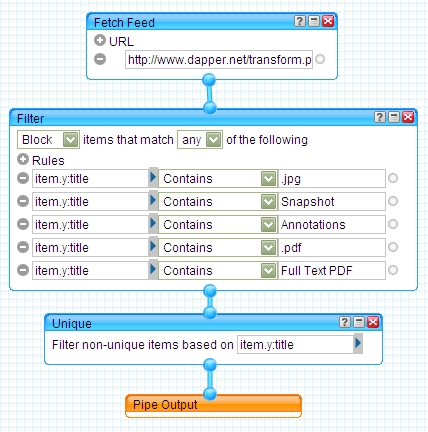Last month I questioned the Modern Language Association’s decision, handed down in the 7th edition of the MLA Handbook, to exclude URLs (i.e. web addresses) from bibliographies and Works Cited lists. My readers seemed to be divided, and Rosemary Feal, the Executive Director of the MLA, joined the conversation by outlining some of the reasons for the new style guidelines. I appreciated both Rosemary’s insider perspective and her levelheaded response to my rhetorical flourishes (I wrote with gleeful abandon that the new guidelines represented nothing less than “historiographic homicide”).
The fact is, as Rosemary pointed out, you can still include URLs, they’re just not there by default. I can live with that. I’m reasonably attuned to both my sources and my audience. I can figure out when I should include web addresses for my audience’s benefit and when I shouldn’t.
But the problem isn’t me. It’s computers.
What happens when ProCite or EndNote or Zotero generates your bibliography? What happens when novice scholars — as most of our undergraduates and even our graduate students are — use a machine-made bibliography, formatted automatically without any insight or intervention?
Or, what happens when you’re just in a hurry and you let the software finalize your research for you? This is what happened to me, in fact. Just a few days ago.
The problem isn’t me. It’s computers.
I had presented a paper at the MLA’s annual convention in late December, and several people asked me to send them a copy. It was a decent paper. Not overly ambitious, just me tackling a question I had about the unorthodox use of cut scenes in the PS2 game Shadow of the Colossus. I certainly didn’t mind sending out copies to friendly audience members. As I was looking over the document in Word before emailing it, though, I noticed something very strange about my bibliography. The list of sources seemed too bare somehow. Frail. Skeletal. Impoverished.
And of course I realized what was wrong. I had formatted the bibliography through Zotero, using the new MLA style guidelines. URLs were gone, vanished, kaput! The effect was quite dramatic, since many of my sources were digital born, published in online journals with no print equivalent.
Luckily, Zotero developers extraordinaire Simon Kornblith, Christian Werthschulte, and Sebastian Karcher have created several branches of the MLA citation style for Zotero, one of them being the “MLA Style for purposes where the URL is still required.” I promptly installed the style (and you can too, if you have the Zotero plugin). I reformatted my bibliography, and finally I saw what I wanted to see: direct links to whatever sources my readers would want to follow up on.
You know which bibliographic style I prefer, but what about you?
Here’s a little experiment.
I am including below the two different bibliographies from my paper “Playing the Cut Scene: Agency and Vision in Shadow of the Colossus.“ Both were automatically generated by Zotero. The first version of the bibliography follows the new MLA citation guidelines and excludes URLs. The second version follows older MLA practices and includes URLs. Which one do you prefer? Look them over and answer the poll at the bottom of the post.
MLA BIBLIOGRAPHY #1 (FOLLOWS NEW GUIDELINES)
- Bogost, Ian. “Persuasive Games: The Proceduralist Style.” Gamesutra 21 Jan 2009. Web. 1 Feb 2009.
- Ciccoricco, David. “’Play, Memory’: Shadow of the Colossus and Cognitive Workouts.” Dichtung-Digital 2007. Web. 14 Mar 2009.
- Fortugno, Nick. “Losing Your Grip: Futility and Dramatic Necessity in Shadow of the Colossus.” Well Played: Video Games, Value and Meaning. ETC Press (Beta). Web. 21 Jun 2009.
- Galloway, Alexander R. Gaming: Essays on Algorithmic Culture. Minneapolis: University of Minnesota Press, 2006. Print.
- Juul, Jesper. Half-Real: Video Games between Real Rules and Fictional Worlds. Cambridge: MIT Press, 2005. Print.
- Newman, James. “The Myth of the Ergodic Videogame: Some Thoughts on Player-Character Relationships in Videogames.” Game Studies 2.1 (2002): n. pag. Web. 25 Dec 2009.
- —. Videogames. London: Routledge, 2004. Print.
- Poole, Steven. Trigger Happy: Videogames and the Entertainment Revolution. New York: Arcade, 2000. Print.
- Salen, Katie, and Eric Zimmerman. Rules of Play: Game Design Fundamentals. Cambridge: MIT Press, 2004. Print.
- Sherman, Ben. “Story Mechanics as Game Mechanics in Shadow of the Colossus.” Gamesutra 28 Mar 2006. Web. 14 Mar 2009.
- Squire, Kurt, and Henry Jenkins. “The Art of Contested Spaces.” Publications. Web. 15 Dec 2009.
- Wolf, Mark J. P. The Medium of the Video Game. Austin: University of Texas Press, 2002. Print.
MLA BIBLIOGRAPHY #2 (FOLLOWS OLD GUIDELINES)
- Bogost, Ian. “Persuasive Games: The Proceduralist Style.” Gamesutra 21 Jan 2009. Web. 1 Feb 2009. <http://www.gamasutra.com/view/feature/3909/persuasive_games_the_.php?print=1>.
- Ciccoricco, David. “’Play, Memory’: Shadow of the Colossus and Cognitive Workouts.” Dichtung-Digital 2007. Web. 14 Mar 2009. <http://www.brown.edu/Research/dichtung-digital/2007/Ciccoricco/ciccoricco.htm>.
- Fortugno, Nick. “Losing Your Grip: Futility and Dramatic Necessity in Shadow of the Colossus.” Well Played: Video Games, Value and Meaning. ETC Press (Beta). Web. 21 Jun 2009. <http://www.etc.cmu.edu/etcpress/node/278>.
- Galloway, Alexander R. Gaming: Essays on Algorithmic Culture. Minneapolis: University of Minnesota Press, 2006. Print.
- Juul, Jesper. Half-Real: Video Games between Real Rules and Fictional Worlds. Cambridge: MIT Press, 2005. Print.
- Newman, James. “The Myth of the Ergodic Videogame: Some Thoughts on Player-Character Relationships in Videogames.” Game Studies 2.1 (2002): n. pag. Web. 25 Dec 2009. <http://www.gamestudies.org/0102/newman/>.
- —. Videogames. London: Routledge, 2004. Print.
- Poole, Steven. Trigger Happy: Videogames and the Entertainment Revolution. New York: Arcade, 2000. Print.
- Salen, Katie, and Eric Zimmerman. Rules of Play: Game Design Fundamentals. Cambridge: MIT Press, 2004. Print.
- Sherman, Ben. “Story Mechanics as Game Mechanics in Shadow of the Colossus.” Gamesutra 28 Mar 2006. Web. 14 Mar 2009. <http://gamasutra.com/features/20060328/sherman_01.shtml>.
- Squire, Kurt, and Henry Jenkins. “The Art of Contested Spaces.” Publications. Web. 15 Dec 2009. <http://web.mit.edu/cms/People/henry3/contestedspaces.html>.
- Wolf, Mark J. P. The Medium of the Video Game. Austin: University of Texas Press, 2002. Print.
